- Windows Server
- WinRM
- 09 November 2017 at 16:55 UTC
-

RSAT (Remote Server Administration Tools) is a complete collection of tools provided by Microsoft that enables system administrators to manage a Windows Server server (from 2008 to 2012 R2) from a client version of Windows (from Windows Vista to Windows 10).
These tools correspond to the consoles you already know, but RSAT is also compatible with client versions of Windows.
If you want to install them on a Windows Server, you can activate them via Windows Server features (as you will see at the end of the tutorial).
- Required configuration
- Enabling remote server management
- Installing and using RSAT tools
- Installing RSAT tools under Windows Server
1. Required configuration
1.1. For client versions of Windows
RSAT tools are available for client versions of Windows :
- Windows Vista
- Windows 7
- Windows 8
- Windows 8.1
- Windows 10
Important : RSAT tools can only be installed on Professional or Enterprise editions of Windows. So, you will not be able to install them on a family or standard Windows edition.
Note : the RSAT support information is available on the "Remote Server Administration Tools (RSAT) for Windows operating systems" page.
1.2. For server versions of Windows
The administration consoles available in RSAT can also be installed under Windows Server using the Add Roles and Features wizard.
This is possible for these versions of Windows Server :
- Windows Server 2008
- Windows Server 2008 R2
- Windows Server 2012
- Windows Server 2012 R2
2. Enabling remote server management
To get started, if you want to manage your server remotely, you must first enable remote server management.
Otherwise, the server manager (available in the RSAT tools) will not be able to connect to your server and will tell you that the Winrm service may not be started on your server.
To enable remote server management, open the server manager and go to the "Local Server" section.
Then, locate the "Remote management" line.
If this remote management is disabled, click on the "Disabled" link.

Then, check the "Enable remote management of this server from other computers" box.

If you click on the "More information about remote management, ..." link, Windows will tell you that remote management works thanks to WinRM.

3. Installing and using RSAT tools
To have the right to manage your server remotely, you will need to be logged on to your machine with an account that has server administration rights.
The easiest way to do this is to use a machine that is linked to the Active Directory.

Be sure to log in with an Active Directory account that has the right to manage your server remotely.

Then, download and install Microsoft's RSAT Tools.
The list of download links for RSAT tools is available on the "Remote Server Administration Tools (RSAT) for Windows operating systems" page.
Once you have downloaded these tools, launch the downloaded file.
As you can see, these tools are provided as a Windows update (KB2693643).


Accept the terms of the license agreement.

Wait while installing the update.

Click Close.

Now, enable and/or disable the RSAT tools you want through the Windows features.
To do this, open the Control Panel and go to "Programs : Uninstall a program -> Turn Windows features on or off".

In this list of Windows features, you will find the remote server administration tools (which correspond to the RSAT tools).
On Windows Vista and Windows 7, all these tools are installed by installing the previously downloaded update, but these tools are not enabled by default. You will need to activate the ones you want to use.
On Windows 8, 8.1 and 10, all these tools will automatically be activated after they are installed.
As you can see, you will find the server manager.

The tools to manage an Active Directory server, a certification authority (Active Directory Certificate Services Tools), a DHCP server, ...

But also the management of group policies, and many other features of Windows Server.

If you go to the Windows Home screen, you will see that a new shortcut has been automatically created for the server manager.

In the Server Manager, click on the "Add other servers to manage" link.

In the "Active Directory" tab, verify that your domain is indicated for the location and specify the name of your server.
Then, click "Find Now".
If all goes well, your server will appear in the list on the left.
If so, select it and click the middle arrow to add this server to the list on the right.
Then, click OK.

The server manager will retrieve information about your server, and the list of roles installed on this server will appear on the left.
As you can see in the image below, our server has these roles : AD DS (Active Directory), DNS and file server.

Finally, if you go into the Windows administration tools, you will see that several consoles have also made their appearances.
And especially :
- the new Active Directory administration center
- the management console for DHCP servers
- the management console for DNS servers
- and more.
Note : administration tools are accessible from the Control Panel -> System and Security -> Administrative Tools.

Among the available consoles, you will find the "Active Directory Users and Computers" console to manage the users and computers of an Active Directory server.

If you have the right to manage the Active Directory server, the Active Directory server information will be displayed.

Otherwise, a warning will be displayed when you start the console to ask you to log on with a user with administrative privileges.

Additionally, the console will be empty because you don't have permission to manage the Active Directory server.

4. Installing RSAT tools under Windows Server
To install the RSAT tools under Windows Server, no download is required.
Simply launch the Add Roles and Features wizard and locate the "Remote Server Administration Tools" feature pack.
Note : since our server already has the AD DS (Active Directory) and DNS roles, the AD DS and AD LDS tools are already installed.

Share this tutorial
To see also
-
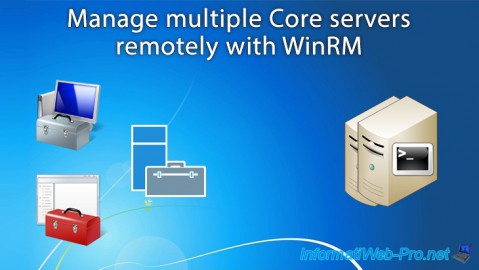
Windows Server 11/16/2018
WS 2012 / 2012 R2 - Manage multiple Core servers remotely
-
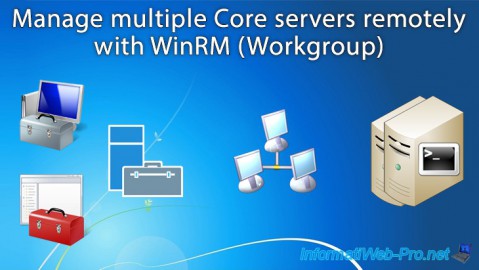
Windows Server 11/23/2018
WS 2012 / 2012 R2 - Manage multiple Core servers remotely (Workgroup)
-
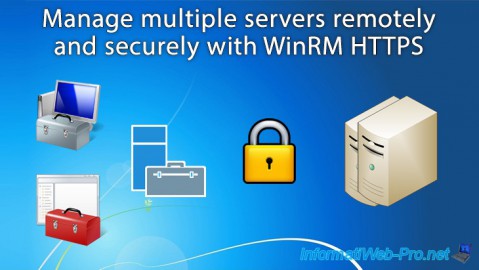
Windows Server 12/1/2018
WS 2012 / 2012 R2 - Manage multiple servers remotely (securely)
-
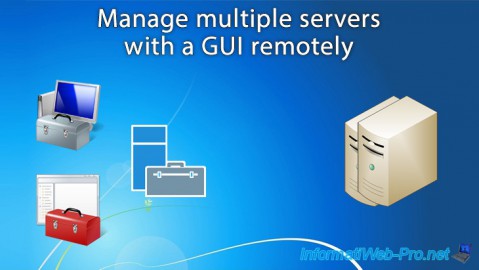
Windows Server 11/10/2018
WS 2012 / 2012 R2 - Manage multiple servers with a GUI remotely

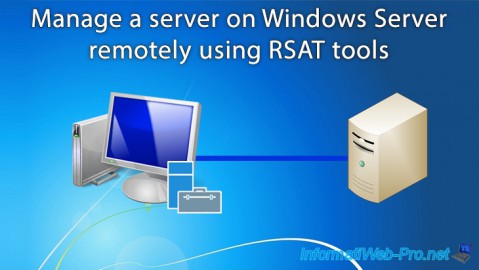
You must be logged in to post a comment